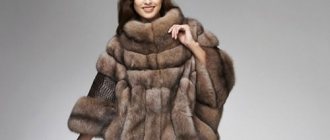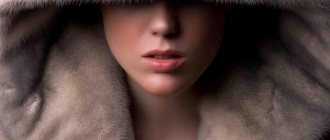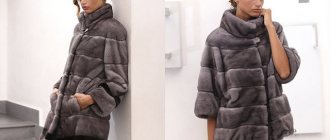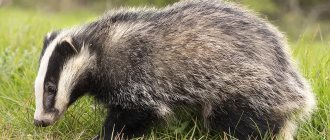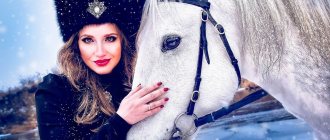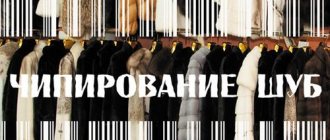Are prices for fur products expected to increase in Russia in 2021?
The President of the Russian Fur Union, Sergei Stolbov, warned about this possibility. According to him, the cost may increase in the new season
Photo: Anton Podgaiko/TASS
In 2021, prices for fur products in Russia may increase by 30-40%. The reason is a shortage of raw materials. The increase in fur prices for some items turned out to be twofold, said Sergei Stolbov, president of the Russian Fur Union. According to him, price increases should be expected in the new season.
It was previously reported that due to the pandemic, fur turnover decreased by 35-40%. Overall, the drop was about $2 billion.
If last year the average price for a mink product was about 87 thousand rubles, then in the new season it can reach 120 thousand rubles per item.
China acquires 80% of the world's mink skin production. In November, after the slaughter of the entire Danish mink population (17 million animals) due to coronavirus, prices for skins in China increased by 30%. Then the Ministry of Industry and Trade stated that this was a good opportunity for Russian exporters. So far, Russian manufacturers have not seen any advantages for themselves, but with regard to the production of finished products, the chances are good, Stolbov noted.
Here is how Anzhelika Novitskaya, an independent commodity expert on fur goods, comments on the situation:
Anzhelika Novitskaya, independent commodity expert on fur goods “Indeed, the price of fur at auctions has risen in price. This season, the cost of fur products has already increased significantly, due to the pandemic and the reduction in the mink population. All this affected deliveries to Russia and the pricing of final products. This percentage is indeed large, but perhaps it does not apply to the entire mink. It differs in quality, some products are of a higher level and without defects. Their price can increase as much as possible. But the cost of products with defects may not even change. You have to look individually: female or male, size. There's up to 40-50% depending on the lot. The cost of good lots was already high, and now, given the reduction in the total quantity of mink, it has increased even more.”
It is obvious that prices will rise, but by a maximum of 20%, says PR director Olga Demidova.
Olga Demidova PR Director “The Danish fur crisis, which unfolded in November 2021, has led to the fact that the mink population has currently decreased by one third. Denmark is the world leader in the volume and quality of mink fur today. Such a sharp decrease in volumes may lead to a shortage of raw materials. However, it is now too early to say that prices for fur products on the Russian market will increase in direct proportion. The formation of retail prices is influenced by a large number of factors, which are currently extremely difficult to assess. For our part, we are monitoring the market situation and taking measures to contain prices. Our main task is to reduce costs as much as possible so that the final price for the buyer remains at plus or minus the same level. We understand that today the purchasing power of Russians has decreased, and there are no prerequisites for it to increase significantly. At the moment, our prices remain at 2021 levels. They will grow by 10-15%, maximum 20%. This is the forecast for our network.”
Last year, Russia sold almost 350 thousand mink skins to China. According to the Fur Union, exports are expected to double this year.
Add BFM.ru to your news sources?
Trends in the commercial fur market (for hunters)
Market trends in commercial furs for hunters
SOBOL - an increase in the number of trading platforms (auctions) to three will further contribute to a decrease in the general price level. Selectively, certain colors will sell well, there will be good demand and a high (increasing) price for gray skins. FORECAST: price reduction by 5-10% MARTEN - large sizes and with a well-furred tail continue to be in stable demand. Small sizes and poorly pubescent ones lose value. FORECAST: for large sizes the price will rise by 5-10%, for small sizes the price will fall by 10% MUSCLE - shows stable demand from China. FORECAST: prices for ice-caught muskrat are expected to increase by 10%, and for small sizes, grades 2 and 3, prices are expected to decline by 50% PROTEIN - high demand from China and domestic processors, as well as low global supply. FORECAST: price increase by 10% COLUMNS - high global demand and low supply. FORECAST: price increase by 10% Otter - low harvest volumes, status of a licensed species, presence in CITES leads to a drop in demand. FORECAST: price reduction by 20% from current levels. FOX - low level of demand, prices are at their historical “bottom”, by the end of the season we expect an improvement in sales at a low price level. FORECAST: stable low prices RACCOON DOG - decreased demand for raccoon edges within the country and stable demand for cheap but well-furred raccoon from China. FORECAST: price reduction by 20%, except for skins of good size and good fur. LYNX - good skins, well furred, with a clean belly and pronounced spots, continue to be in demand, feel free to order licenses and sell at the best price. FORECAST: the price of pelts with a license will increase by 15% ERMINE, BEAVER, POCKET, MARROTOK, BADGER - have limited demand and low prices, sold at 20-30% of the historical maximum level of the past 15 years. WOLF demand is only for skins of good size and fur. Skins of medium, small sizes, 2 grades and poor pubescence are not in demand. WOLVERINE is in stable demand, feel free to take licenses for any volume and sell this season at 10-20% more expensive. MINK is in stable demand at a low price, there will be no problems with sales. There is a demand for dry, salted and even frozen skins. FORECAST: price increase by 10% ASK FOR FUR PRICE LIST FROM OUR REPRESENTATIVES
Fur is no laughing matter Why fur production is falling in Russia
Over the past twenty years, Russia has lost its position as a world fur power. Will it be able to regain its place in the market and what will be needed for this? Lenta.ru tried to understand these issues.
In the 1980-1990s, our country ranked first in terms of the volume of fur sold in the world. Almost entirely it was supplied abroad and served as one of the main sources of foreign exchange earnings for the treasury. During the year, the country produced from 10 to 15 million skins of different types of animals.
With the beginning of perestroika, this sector of the national economy, like others, began to fall apart. Of the more than 400 farms, about 30 remain today; Global fur production volumes now do not exceed 3 percent. Almost all fur farms in Primorye, Karelia, Leningrad region, Eastern and Western Siberia ceased to exist.
Many enterprises have gone bankrupt in recent years - the fur industry is experiencing a crisis all over the world, and the resulting cataclysms in the domestic economy have only worsened the situation of enterprises. Compared to previous achievements, fur production volumes have decreased tenfold: today, Russian fur farms produce only 2.2 million mink skins, the main animal bred in captivity.
Almost all domestic fur today is sold on the domestic market. According to sellers of fur stores, in Russia over the past three years, sales of products - albeit high-status, but expensive - have fallen sharply. In the winter of 2014, demand decreased by 30-40 percent, and last season by almost 50 percent. This year the decline in sales should slow down, but will also reach double digits.
Enterprises in the industry are faced with the problem of selling furs: at the only fur auction in Russia - Soyuzpushnina (St. Petersburg) - at the end of last year, only 20 percent of sable, the animal most in demand among buyers, was sold. At the April auction of this year, sable was sold out almost completely, but muskrat, mink and arctic fox were not sold.
Demand for furs is also falling in foreign markets, where prices for fur products have more than halved. Three years ago, a sable skin was sold at auction for 320 euros, two years ago it was only 50 euros, now it costs about 80. For some types of fur, purchasing prices turned out to be lower than production costs, and business profitability fell to one and a half percent.
The drop in demand is partly due to the global trend towards reorientation from products made from natural to artificial fur. “The current trend in the field of fashion is that all modern world designers and fashion designers have turned to eco-technologies for creating fur. It’s not surprising: the fashion world has finally seen the light and realized that you can dress people smartly without causing suffering to animals. Stella McCartney, Ralph Lauren, Gucci, Armani and many other global brands have already done this,” says Marina Riviera, designer of the eponymous brand of eco-friendly fur clothing.
Photo: Vyacheslav Prokofiev / TASS
The problem was also caused by the overproduction of fur in the world, where the leading positions after the collapse of the USSR were taken by Denmark (12-14 million furs per year), China (9-18 million), Holland and Poland (4.5-4.8 million). In terms of large animals - arctic fox and fox - the leaders were Finland (1.8-2.2 million) and China (1.5 million).
European Union countries have become especially active in the market, investing in the creation of capacities for raising fur-bearing animals. And now, in difficult times, European manufacturers are doing well. “Our bank rates are tenths of a percent, so taking out a loan of a million euros is not difficult,” says fur broker Vitaly, who once had a fur farm in Russia, but moved to Finland several years ago.
According to him, if there is no demand, farmers get out of the situation in the following way: they freeze the skins in special refrigerators, where they can lie for several years and go under the hammer at a more prosperous time. “In general, we have very favorable conditions for business, everything is clean and transparent, no gray schemes or bureaucracy. The numbers speak for themselves: if in Russia today there are about 20 large farms, then in small-sized Finland there are about two thousand!” - Vitaly explains.
Our businesses really have to survive. Production is expensive: during the crisis there was a jump in feed prices and transport tariffs increased. Almost everything has to be purchased abroad - from breeding stock (after perestroika, the domestic gene pool was lost) to equipment. According to Georgy Chetverkin, director of the breeding (Tver region), the company even trained specialists in artificial insemination of animals abroad - the domestic school has not existed for a long time. The process of economic development is also hampered by difficulties in attracting long-term financing. But Savvatyevo is doing well compared to other industries, since it sells mink at the Copenhagen Fur Auction, the world's main auction site for fur. Other enterprises have an even harder time without foreign exchange support. “We would like to find working capital somewhere; loans are completely unavailable these days,” complains the general director of the Saltykovsky pedigree animal farm (Balashikha), Konstantin Kirilushkin.
But the industry suffers not only from a lack of funding; for many years it has been stifled by the dominance of counterfeit goods. After all, even in times of crisis, the Russian market remains the second largest in the world for the sale of fur products, and 90 percent of the products sold here are imported.
This market is huge: according to the Russian Fur Union, its volume is 8-9 billion rubles per year. And more than half of all products sold are smuggled, Chetverkin believes. According to other experts, 200 thousand imported fur coats are officially imported into Russia every year, all other imported products (and there are over a million of them) are illegal. “It is impossible for us to compete in conditions when a huge flow of gray imports comes from China,” says Chetverkin. “We pay all taxes and lose very much to goods imported without paying customs duties.”
Photo: Vladimir Vyatkin / RIA Novosti
International fur auction, 1990. Lots are bundles of skins.
True, the state has begun to fight this problem. The state labeling system, which began operating in April of this year, should put an end to the import of illegal goods - all outerwear and accessories made from mink, nutria, arctic fox, fox, rabbit, raccoon, sheepskin and other types of natural fur are subject to it. Since October, sanctions have come into force for the import, storage, movement and sale of finished natural fur coats without special chips. The government's next step may be to introduce mandatory labeling on sable skins. “We hope that this will limit the import of contraband products by at least half,” says Vyacheslav Chetverkin. Although, he admits, it is known that China has already launched the production of chips and is importing goods into our country with the appropriate markings.
The fur business has a lot of other problems. Thus, according to Chetverkin, the development of fur farms is hampered by a lack of personnel - young people do not want to receive an education in the field of fur farming, the profession, already aging, is simply dying out. According to Lenta.ru’s interlocutor Vitaly, running a fur business in Russia is greatly hampered by bureaucratic and near-criminal “growth”: “It is believed that this is a super profitable business, akin to gold mining, so someone always wants to get something out of it.”
Finally, there is a common problem for any business in our country - uncertainty about the future. “This should be done by professionals on their own land, and not on rented land, as is often the case. I must be sure that my business will remain with me forever and will be inherited,” Vitaly explains his move from Russia to Finland. As a result, experts say, in this industry there are many temporary workers, random people and simply resellers who purchase pelts from hunters.
And, of course, the industry lacks government support. “Now the agro-industrial complex in the country has recovered, but there are few people willing to go into fur production,” shares Chetverkin. In order for Russia to restore its position at international auctions, and for Russian fur to remain in demand all over the world, large investments are needed. “We, private owners, cannot do this ourselves; we need government programs,” says Georgy Chetverkin. - But they don’t see us yet. Today, the state is first of all solving the problem of food production.” Simply put, the main thing for the authorities now is to feed the population. And what it will wear in winter is the next thing.
